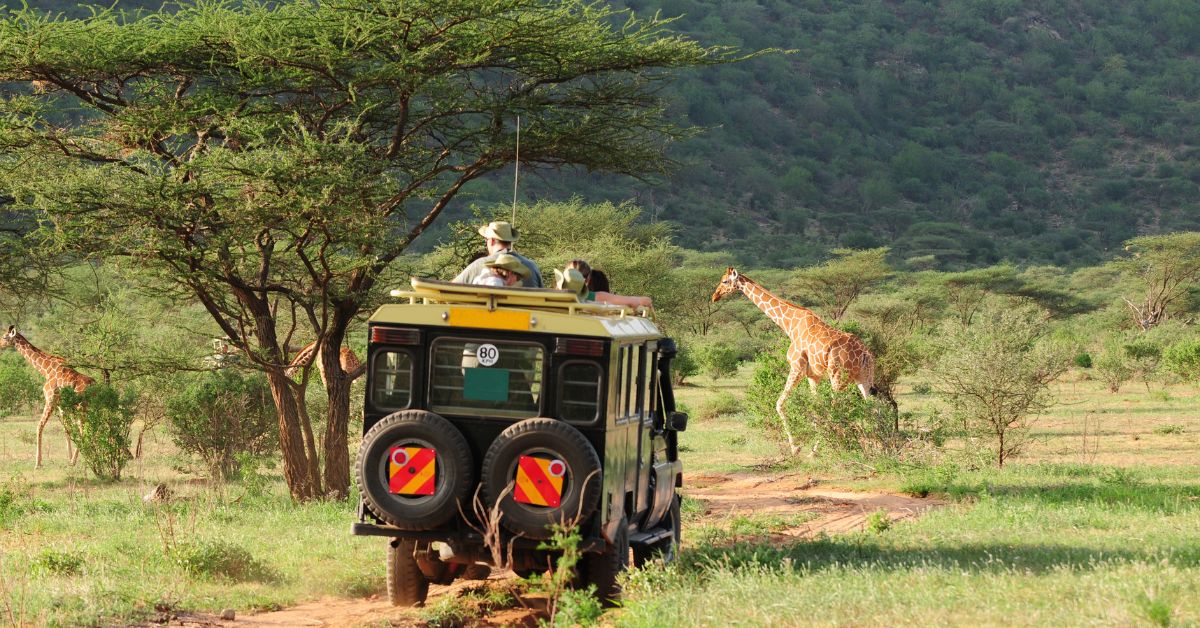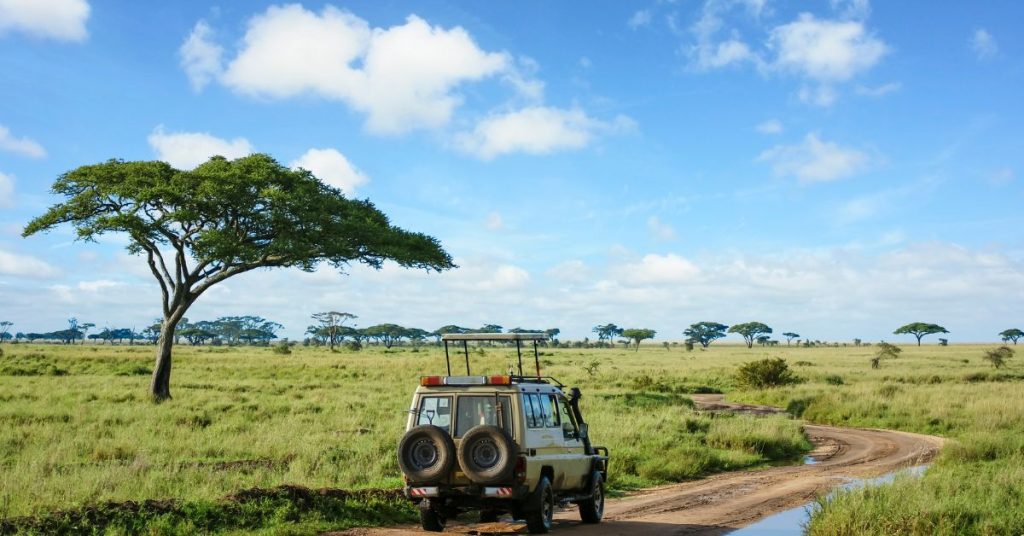What Makes Safari Tours Ideal for Families
Safari tours offer a special way for families to bond while learning about wildlife and nature. Unlike busy city trips or amusement parks, a safari slows things down. Families spend time together in wide open spaces, watching animals in their natural setting. Children and adults both get the chance to see things they usually only read about in books or watch on television. A safari is not about rushing from one place to another. It is about patience, excitement, and shared experiences that bring families closer.
Different Types of Safari Tours for Families

There are different safari styles suited for families. Guided safaris involve a professional leading the group and explaining what to look out for. Self-drive safaris offer more flexibility and allow families to explore at their own pace. Walking safaris are another option where older children and parents can experience nature up close. Each type brings something unique to a family experience, depending on the ages and interests of the children.
Choosing the Right Safari Destination for Family Travel
Picking the right destination for a family safari matters a lot. Some areas are better suited for young children because they offer shorter drives, more accessible terrain, and a higher chance of seeing animals quickly. Families should choose places where there is plenty of wildlife and where the travel distances between viewing areas are short. Destinations that cater specifically to families often have added activities like junior ranger programmes and wildlife talks suited to young minds.
Best Times of Year for Family Safari Tours
Timing can make or break a safari trip. During dry seasons, animals gather around water sources, making them easier to spot. In wetter months, some areas may be harder to reach, and the animals may be spread out. Planning a safari during school holidays is common, but families should always check the best wildlife viewing seasons to match their plans. Cooler months tend to be more comfortable for younger travellers, especially when long hours in a vehicle are expected.
What to Pack for a Family Safari
Packing well for a family safari can make the experience much smoother. Light clothing that covers the arms and legs helps protect from insects and the sun. Comfortable shoes are needed for walking. Hats, sunscreen, and sunglasses are also important. Binoculars can turn even a distant sighting into an exciting moment. Bringing a few simple snacks and entertainment for children between drives helps keep energy levels high and moods positive.
The Role of Guides on Family Safaris
A good guide makes a big difference on a family safari. Experienced guides know how to keep children engaged with interesting facts, stories, and games. They also understand how to spot animals quickly, making sure that families get the best viewing opportunities. Patience is key when working with children, and the best guides take the time to answer every question, no matter how simple or complex it may seem.
How Long Should a Family Safari Be
The right length for a family safari depends on the ages of the children and their ability to cope with long drives. For very young children, a safari of two to three days is often enough. Older children may enjoy trips lasting five days or more. Mixing short morning and afternoon drives with plenty of free time helps prevent the experience from becoming overwhelming. Quality always beats quantity when it comes to making lasting family memories.
Animal Encounters and Safety on Safari with Children
Safety should always come first on a safari. Children should understand that the animals they see are wild and unpredictable. Simple rules, like staying quiet during sightings and keeping limbs inside the vehicle, need to be followed at all times. Guides usually explain these rules clearly, but parents should reinforce them. With the right balance of freedom and caution, children can enjoy thrilling encounters safely.
Educational Benefits of Family Safari Tours
A safari can be one of the best educational experiences for a child. Learning about animal behaviour, ecosystems, and conservation efforts brings textbook knowledge to life. Children also develop patience, observation skills, and respect for the environment. Many safaris include talks or demonstrations about tracking animals, understanding ecosystems, and the impact humans have on wildlife. These lessons stay with children long after the trip ends.
Combining Safari Tours with Other Family Activities
Mixing safari drives with other activities keeps the trip exciting for children. Some areas offer boat trips, cultural visits, birdwatching outings, or simple nature walks. Combining different experiences makes the journey more rewarding and helps younger travellers stay interested. It also gives parents and children a break from sitting in a vehicle for long periods.
Malaria-Free Safari Areas for Families
Choosing a malaria-free safari area gives families peace of mind. Young children are more vulnerable to mosquito-borne diseases, and avoiding regions where malaria is present can make travel planning easier. Many malaria-free reserves offer excellent wildlife viewing without compromising safety. Always check vaccination and health recommendations when planning a trip.
Cultural Experiences During a Family Safari
Safari tours often include chances to learn about local cultures. Visiting local villages, learning about traditional crafts, or listening to community stories adds depth to the experience. These cultural moments help children understand that wildlife and people share the same land. It teaches respect for different ways of life and broadens their view of the world.
Photographing Your Family Safari Experience
Taking good photographs on safari helps preserve family memories. Cameras with zoom lenses are useful for wildlife shots, but smartphones often do the job for family portraits and quick moments. Encourage children to take their own pictures as well. Their view of the safari will often be different, capturing fun angles and small moments adults might miss.
Preparing Children for a Safari Trip
Preparing children before the trip helps them get more out of the experience. Reading simple books about African animals, watching nature documentaries, or even playing games about wildlife builds excitement and basic knowledge. Children who know what they are looking at often enjoy the safari much more and feel more connected to what they are seeing.
The Importance of Rest Days During a Family Safari
Even the most exciting trips can be tiring, especially for younger children. Building rest days into the safari plan helps families recharge. A day spent around a swimming pool, taking a relaxed walk, or enjoying a picnic can be just as valuable as a game drive. Rest days help avoid burnout and keep spirits high throughout the trip.
Balancing Game Drives with Relaxing Family Time
Finding the right balance between wildlife viewing and downtime is important. Long drives without much action can be draining for children. Mixing short drives with relaxed afternoons creates a better rhythm for families. Planning fun activities like animal-themed quizzes or simple spotting games during downtime keeps the safari spirit alive without tiring everyone out.
How Safari Tours Build Family Memories
Sharing close encounters with wildlife builds strong family memories. The sense of wonder when spotting a herd of elephants, the excitement of tracking a lion, or the laughter when a curious monkey approaches the vehicle creates stories that families will tell for years. These shared moments form a deep bond and give children unforgettable life experiences.
Common Myths About Taking Kids on Safari
Many people believe that safaris are only for adults or older teenagers. This is not true. With the right planning, safaris are accessible to families with children of all ages. Another myth is that children will get bored. In reality, the constant sense of discovery keeps young minds busy and excited. Safety is another concern often exaggerated. With experienced guides and responsible behaviour, family safaris are very safe.
Tips for Keeping Younger Children Entertained on Safari
While the main focus will always be on the animals, small activities help younger children stay happy during quieter moments. Bringing simple games, wildlife checklists, or even basic drawing supplies lets them interact with the experience. Short breaks for snacks and stretching also help maintain a good mood during longer drives.
How Family Safaris Differ from Regular Safaris
Family safaris often run at a slower pace. There is more focus on comfort, shorter drive times, and flexible schedules. Child-focused activities, meals designed for younger palates, These adjustments make the experience more enjoyable for everyone involved.
Using Safari Tours to Teach Conservation to Kids
Safaris offer a chance to teach children about the importance of conservation. Seeing animals in their natural habitat creates real concern for protecting them. Discussions about habitat loss, anti-poaching efforts, and the role of parks and reserves help children understand the need to protect the environment. These lessons often inspire a lifelong love for nature.
Understanding Travel Insurance for Family Safaris
Travel insurance is important for any trip, but even more so for a family safari. Medical cover, trip cancellation, and lost baggage are key things to look for. Insurance should cover safari activities specifically. It gives peace of mind, knowing that even if plans change, the family is protected financially.
Local Cuisine and Food Options on Family Safaris
Food options during safari trips usually cater to a wide range of tastes. Buffets with familiar items like pasta, chicken, and fresh fruit are common. Some places offer picnic lunches for families heading out on long game drives. Trying local foods is also encouraged for those feeling adventurous, but most places always provide simple meals for children who prefer familiar flavours.
Transportation Options During Safari Tours for Families
Most safari tours use specialised vehicles designed for comfort and wildlife viewing. Open-top 4x4s are common, offering good visibility and space for cameras and snacks. Some families choose private vehicles for more flexibility with stops and schedule changes. In areas with waterways, boat safaris add another layer of fun to the journey.
Cost Factors When Planning a Family Safari
Costs for family safaris vary depending on season, location, and length of stay. Private guides, larger rooms, and extra activities can raise the price, but they also make the experience better for families. Travelling outside peak seasons often brings better rates without sacrificing the experience.
Special Safari Experiences Just for Families
Some safari tours offer unique experiences designed especially for families. Tracking animals on foot with a guide, learning how to identify animal tracks, or attending storytelling evenings around a campfire are examples. These activities keep children engaged and make the trip even more memorable.
Age Restrictions to Consider on Safari Tours
Some safari tours and activities have minimum age restrictions. For example, walking safaris usually require children to be a certain age for safety reasons. Parents need to check these rules when planning their itinerary. Choosing the right activities for the age and interests of their children helps avoid disappointment.
Wildlife You Are Most Likely to See on Family Safaris
Families on safari can expect to see a wide range of animals. Big mammals like elephants, giraffes, and lions are usually top of the list. Smaller creatures like warthogs, meerkats, and colourful birds often steal the show for younger travellers. Every drive brings a new surprise, and every sighting creates lasting memories.



